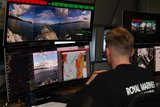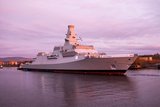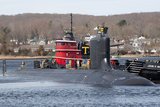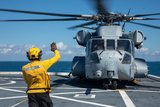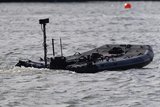Qatar signs MoU for coastal missile system
MBDA has signed a Memorandum of Understanding (MoU) to provide a coastal defence system to the Qatar Emiri Naval Force (QENF), it announced on 30 March. The agreement is expected to pave the way for a $724 million contract for the company.
These systems are capable of deploying two different munitions – the Marte ER missile and Exocet MM40 Block 3 anti-ship missile.
The system can work by data-linking to a higher level within a wider coastal surveillance network or in autonomous mode with its own radar. QENF will use the missile systems to monitor maritime coastal traffic and engage hostile ships threatening their territorial waters.
The Exocet MM40 Block 3 missile is the latest-generation ship-borne version of the Exocet family in service with several navies. It provides enhanced operational performance and technology upgrades, with a mission planning software module that automatically computes engagement plans to support firing decisions.
The MARTE ER is a third-generation member of the MARTE family of missile systems, derived from the MARTE Mk2/S that is already in service with the Italian Navy on its NFH90 and AW101 helicopters. The ER features a turbo engine in place of the rocket motor used in the Mk2/S. It has a sea-skimming flight profile and mid autonomous mid-course guidance.
Antoine Bouvier, chief executive officer, MBDA, said: ‘This MoU represents the first step towards the signing of a contract for this new and innovative coastal missile system. This is a further confirmation of the trust placed by the Qatar Armed Forces in MBDA for its defence requirements.’
More from Naval Warfare
-
![Hanwha wins Australian government approval to increase its stake in Austal]()
Hanwha wins Australian government approval to increase its stake in Austal
The contract would mean the two shipbuilders can collaborate strategically and enhance shipbuilding capabilities in Western Australia.
-
![Royal Australian Navy sizes up modernisation plans for new and existing capabilities]()
Royal Australian Navy sizes up modernisation plans for new and existing capabilities
The Australian navy is pushing ahead with its efforts to modernise its workforce and capabilities while balancing risky submarine upgrades, ageing Collins-class boats and a shrinking minehunter fleet. Head of navy capability RAdm Stephen Hughes updated Shephard on the force’s progress.
-
![UK to join US Navy’s Virginia-class submarine assembly effort to speed up construction]()
UK to join US Navy’s Virginia-class submarine assembly effort to speed up construction
The expansion of the Virginia-class submarine construction to UK shores could accelerate the project as US shipbuilders continue to fall short of delivery goals.
-
![US Navy seeks new sensors for the CH-53K King Stallion heavy-lift helicopter]()
US Navy seeks new sensors for the CH-53K King Stallion heavy-lift helicopter
The US Navy intends to publish a draft request for proposals in Q2 2026 and conduct an open competition for the supply of new electro-optical and infrared capabilities for the CH-53K heavy-lift helicopter.
-
![NATO naval exercises map out future USV requirements but raise questions on acquisition]()
NATO naval exercises map out future USV requirements but raise questions on acquisition
Uncrewed surface vessels have shifted from a desirable capability to a critical one for navies. But should these systems be bought outright, rented as a service or rapidly built using commercial off-the-shelf components?







